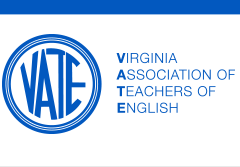Abstract
The Culturally Responsive Education Model (CREM) is a framework by which educators can recognize, digest, and implement cultural responsiveness in their classrooms and school communities. Based on the research of James Banks, Gloria Ladson-Billings, Zaretta Hammond, Marva Collins, Bell Hooks, Geneva Gay, James Comer, and Paulo Freire, the CREM serves as a tool, a practitioner’s guide to culturally responsive teaching and learning, with specific focus on content integration (the curricular and programmatic expansion to celebrate and acknowledge the contributions of diverse groups); knowledge construction (helping students understand how people create beliefs based on their diverse biographies while validating students’ funds of knowledge); prejudice reduction (helping students develop more positive attitudes about people from diverse groups and empowering them to identify and address injustices); equity pedagogy (acknowledging diverse learning styles and intentionally identifying strategies that lead to higher achievement for students in diverse groups); and, empowering school culture (making choices that curate a culture of belonging within the school community). The CREM centers around the continual practice of self-reflection in the promotion of a culture of belonging. The author documents her journey to the development of the CREM framework and provides a transparent, enveloping synopsis of her reading, research, and practice as an educator in an effort to transform and support the pedagogical approach of current and future educators for the well-being of students.
Author Biography
Dr. Monica Manns is the first director of Henrico Schools’ new Office of Equity and Diversity. The position is part of the school division’s core leadership team and reports directly to the superintendent.
Manns has extensive experience in education in Henrico County and in other diverse settings, serving as a principal, teacher, counselor, consultant and administrator.
From 2009-2013, she worked for the Virginia Home for Boys and Girls, serving first as principal of the alternative John G. Wood School, then as the Virginia Home for Boys and Girls’ director of education and vice president of educational services.
Manns is familiar with Henrico County Public Schools. From 2004-2007 she was department chair for special education at the Academy at Virginia Randolph. From 2013-2016 – first as a consultant and then a prevention specialist – she helped the school division lay the foundation for remaking student disciplinary policy and support systems. During her time at Henrico Schools, she also helped start a mindfulness program for schools in Henrico, and helped launch a voluntary reading group for African-American male students at Fairfield Middle School. She left Henrico Schools in 2016.
After beginning her career in 1996 as a vocational counselor helping people transition from incarceration to the workforce, she was drawn to education’s preventative power. She worked as a special education teacher in Fairfax Schools and at an alternative school run by Lutheran Family Services of Virginia; as a vocational coordinator for high-risk students; and as statewide training coordinator for United Methodist Family Services. She has also worked as a coordinator of individualized education plans for students with various special needs, including gifted education.
Manns grew up in Roanoke and in Silver Spring, MD. She earned a bachelor’s degree from Berea College in Kentucky. She has a master’s degree in counseling from the University of Kentucky; a master’s in education from Virginia Tech; and a certificate in educational administration from Virginia Commonwealth University. She is working on a doctorate in special education administration at the College of William and Mary.
In addition to facilitating the advisory committee, Manns will develop, implement and assess Henrico Schools’ short- and long-range cultural diversity plans in pursuit of the division’s goals, and coordinate related professional development for staff members. She will collaborate with other HCPS departments on academic programs and curricula; help to recruit and retain a diverse workforce; serve as a contact point for parent and employee concerns about cultural diversity; connect with community organizations; and serve as a coach and trainer for students, families and employees on cultural diversity issues.
Recommended Citation
Manns, Monica R.
(2021)
"An Introduction to the Culturally Responsive Education Model (CREM): A Personal and Professional Journey to Reflective and Transformative Pedagogy,"
Virginia English Journal: Vol. 71:
Iss.
1, Article 2.
Available at:
https://digitalcommons.bridgewater.edu/vej/vol71/iss1/2

